Solanaceae is a family of plants including a wide variety of perennials, annuals, shrubs, and vines. The potato (Solanum tuberosum), eggplant or aubergine (Solanum melongena), and tomato (Solanum lycopersicum) belong to this family. As a group of plants, it is even often referred to as the ‘potato family’. Other notable members include the notorious deadly nightshade and datura. Solanaceae plants are found across the world in a variety of forms. While a high number of plants are highly toxic, a large amount are harmless, familiar vegetables that we consume almost every day.
A number of species from the Solanum genus (part of the Solanaceae family) can now be found in New England, including the Carolina horsenettle (Solanum carolinense), bittersweet nightshade (Solanum dulcamara), American black nightshade (Solanum americanum), and garden huckleberry (Solanum scabrum and Solanum melanocerasum). These have each been introduced to the area and are poisonous relatives of the tomato. Their fruits are often easily mistaken as edible, so if you’re foraging for wild tomatoes, careful identification is needed.
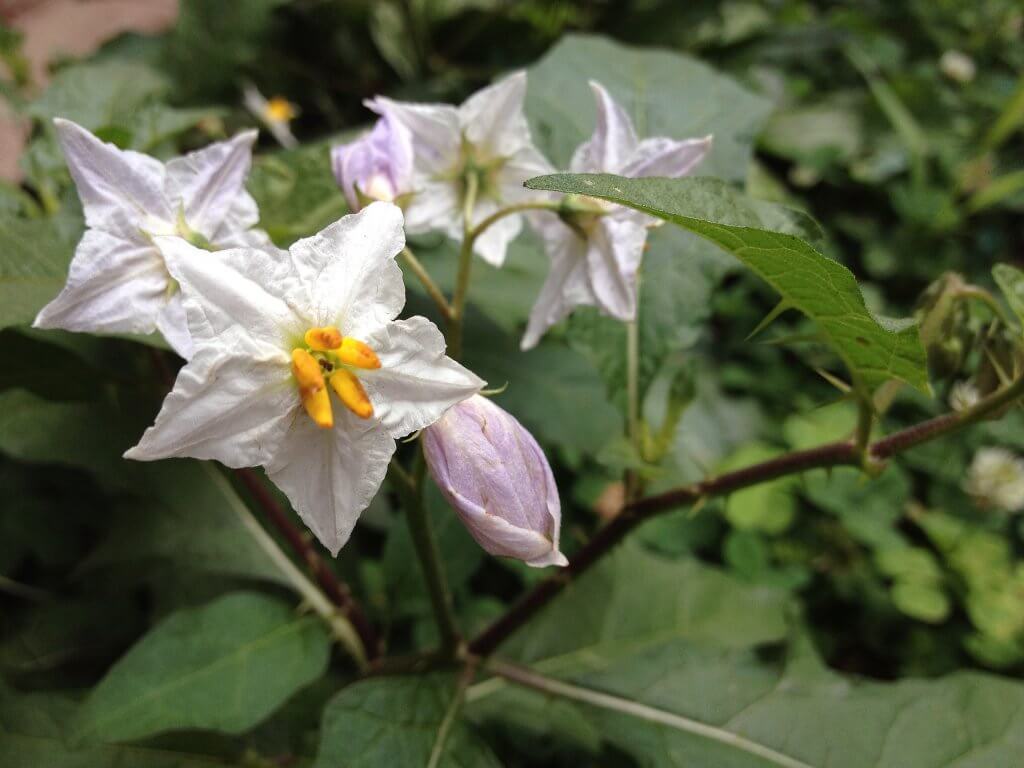
Characteristics
Carolina horsenettle is a perennial plant. Found throughout North America, you can also find it growing in many parts of Europe, Asia, and Australia. Its leaves are toothed and are coated in fine hairs when crushed the leaves also emit a smell very similar to potatoes. Flowers have five petals arranged in a star shape, usually white or purple with a yellow center. The toxic fruits resemble those of the tomato, with a yellow to red hue. The young fruit begins dark green and smooth, but then lightly wrinkles as it ripens. They can be found growing along roadsides and within scrubland.
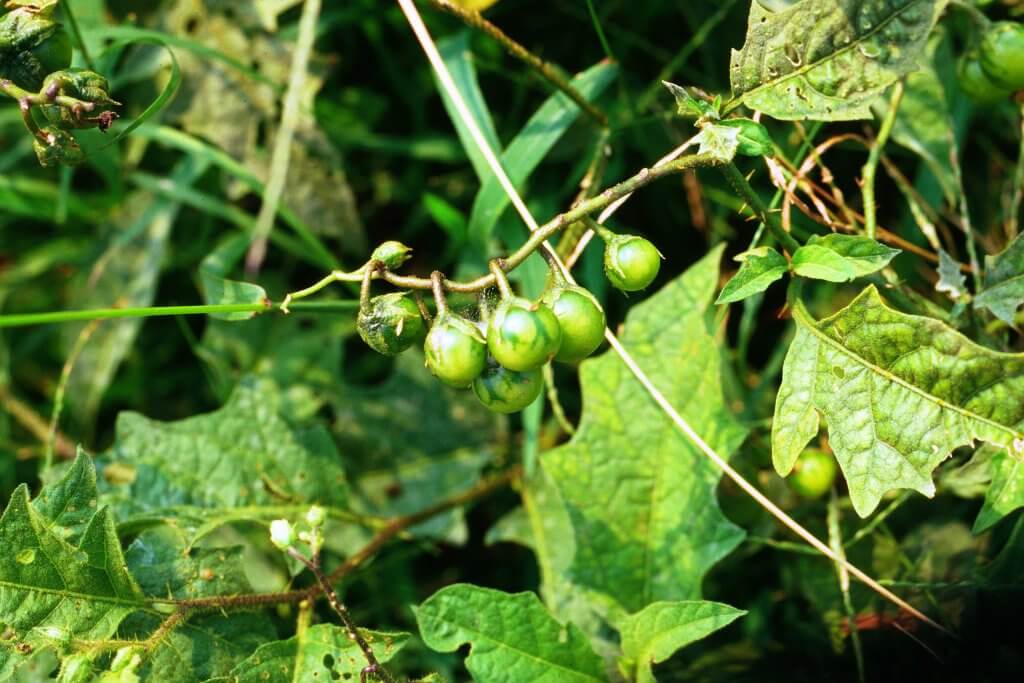
Bittersweet nightshade is a trailing vine plant. It has particularly woody stems which trail across the ground and even other plant species. It has long arrowhead leaves which can sometimes be lobed towards the stem. When flowering, loose clusters of star-shaped purple flower heads form. Its fruits are red, with minor characteristics that resemble a tomato. It is an important part of many bird diets, however, they are toxic to humans.
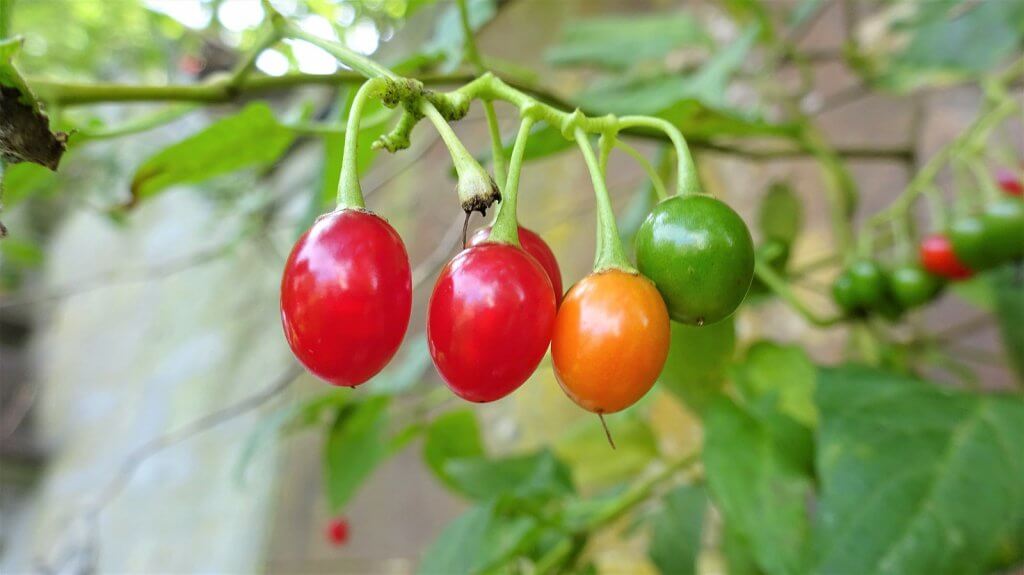
American black nightshade is an annual flowering shrub. With ovate-shaped leaves and small white or light purple flowers. Its toxic fruit are small black and glossy berries, roughly 5-10mm in size.
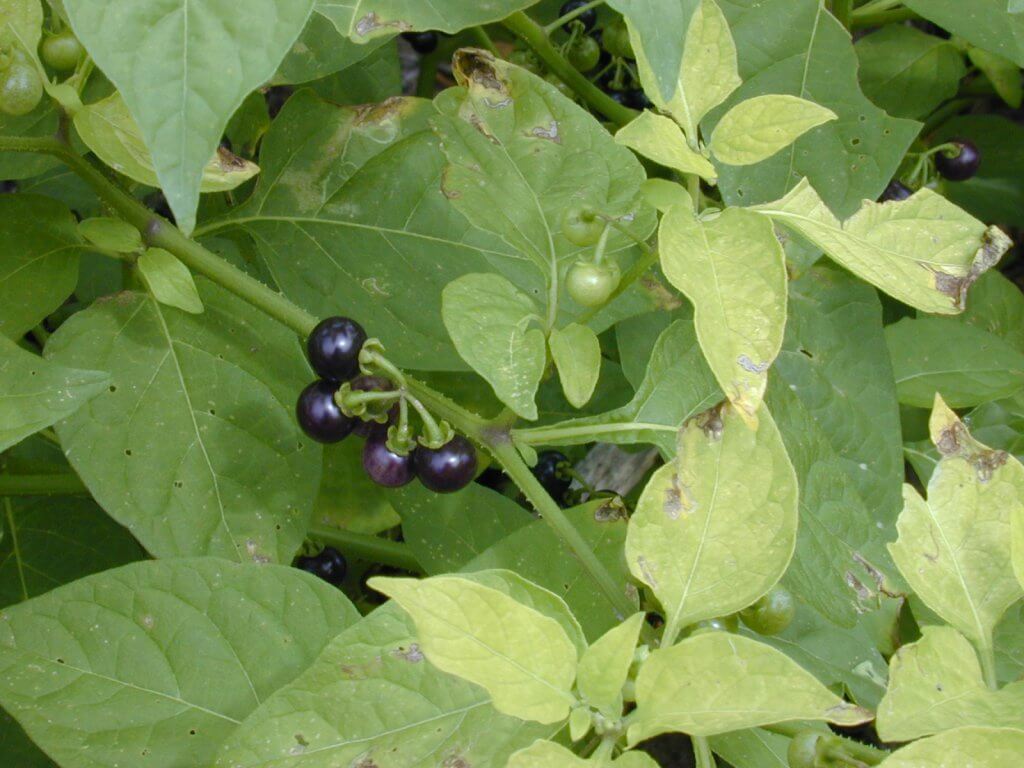
Garden huckleberry can be found as an annual or perennial herb. Originally thought to be native to Africa, you can now find this plant growing throughout the US. Ovate leaves, sometimes coated in fine hairs, adorn this plant. When flowering you will see small white flowers with hints of purple. It bears round purple/black fruits that are packed with seeds.
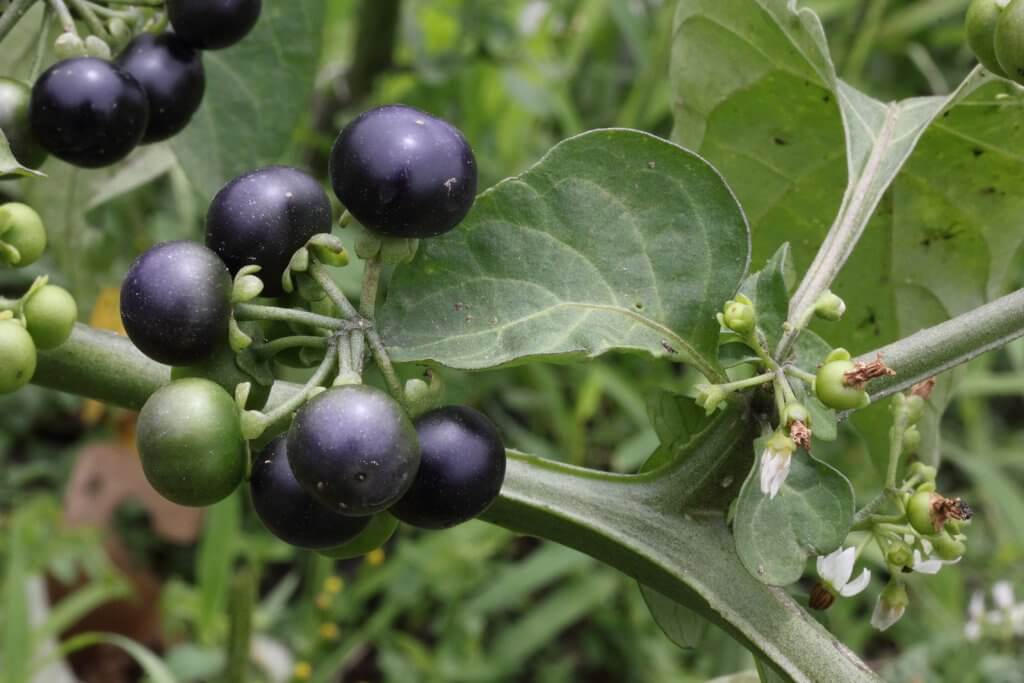
Cultivation
A number of species are cultivated primarily for their ornamental value. The Chilean potato tree (Solanum crispum) and winter cherry (Solanum capsicastrum) both have extremely ornamental flowers and/or berries. However, edible species such as potatoes and tomatoes are cultivated worldwide for their culinary value and versatility.
Garden huckleberry is grown as an edible leaf crop within parts of Africa. However American black nightshade, garden huckleberry, bittersweet nightshade, and Carolina horsenettle are not cultivated or grown as a crop in the US.
Toxicity
The Carolina horsenettle, bittersweet nightshade, American black nightshade and garden huckleberry each have varying levels of toxicity. Depending on the plant part and how developed the fruit is, certain chemicals can be extremely dangerous to humans if consumed.
Horse nettle contains toxic alkaloids which act as a defense for the plant. The entire plant, from berries to stems, contains these chemicals and they can prove fatal if consumed.
Bittersweet nightshade has small red, egg-shaped berries that can be deadly if consumed. Even the foliage contains high levels of solanine (the deadly chemical), which can cause intense convulsions and even death.
American black nightshade contains toxic glycoalkaloids which can be fatally poisonous to humans. The young, undeveloped fruit has higher concentrations of these toxic chemicals.
Garden huckleberry fruits are toxic when consumed raw and unripe. However, some people do choose to eat the ripened fruits after boiling or cooking, although this is not generally recommended.
Foraging and Identification
Wild varieties of some Solanum species can, on occasion, be consumed. However, it depends greatly on the genetic strain and also the area in which the plant resides. Unless a species can be fully verified, consuming any wild members of the family should be completely avoided. Fully ripened black nightshade (Solanum nigrum) berries can usually be safely collected and consumed. Black nightshade must not be confused with American black nightshade, of which the ripened berries are still considered very toxic to humans.

The Carolina horsenettle fruit can be seen throughout the winter and is often considered edible due to its similar appearance to the tomato. The fruits appear in similar colors along an evenly branched stalk. However high levels of alkaloids within these fruits can cause nausea, headaches, fever, circulatory and respiratory issues, and even death.
History
Although many species have a toxic nature, some have been collected and consumed by Native Americans for many generations. The crushed berries of silver leaf nightshade (Solanum elaeagnifolium) were used to curdle milk to produce cheeses. A herbal remedy was also created to help soothe sore throats and toothaches and even snake bites.
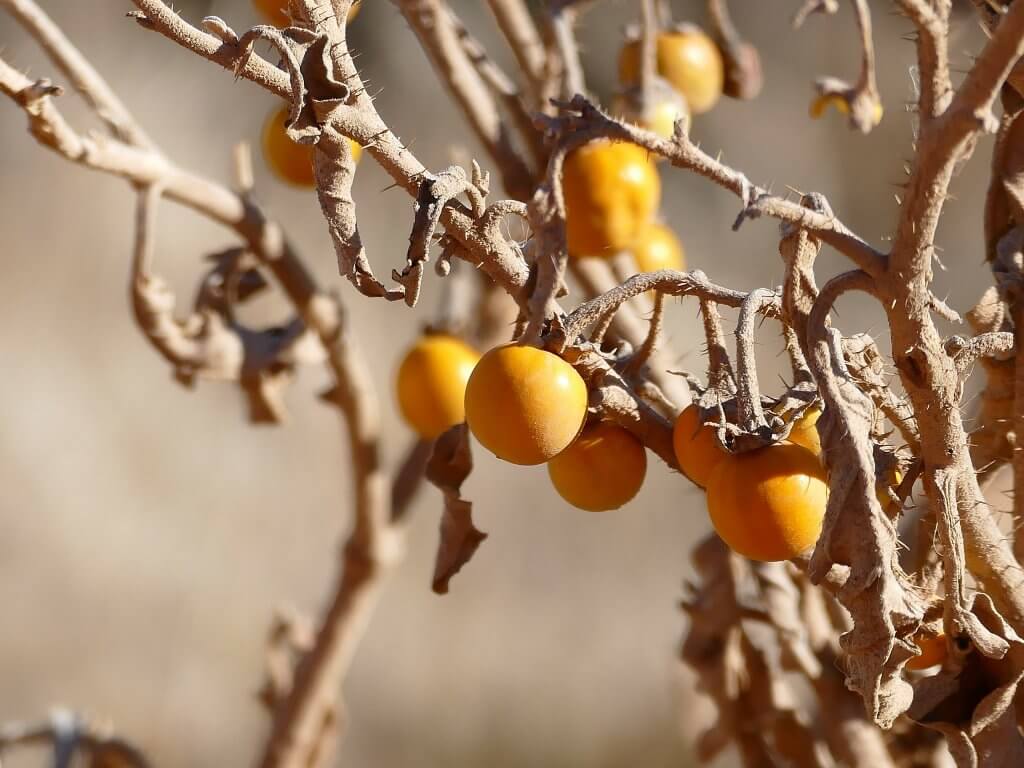
Current situation of North East Native Solanum Varieties
Bittersweet nightshade is fairly common throughout North America, as an introduced species it is now classed as a weed. Carolina horsenettle is also a particularly hardy and vigorous plant. It is commonly found in areas of disturbed soil growing like a weed. Within several US states, it is now classified as a weed. American black nightshade has a widely spread population and is not considered threatened. Garden huckleberry is also widespread and not considered threatened.
Uses
Culinary uses of Solanum varieties
Native Americans throughout history have identified safe berries to consume as part of their diet. Black nightshade is generally considered poisonous, however, its developed fruit and leaves have often been consumed in some areas throughout history and are considered quite tasty, with hints of licorice. Many people within the US today even create pies and jams using these berries.
Generally, most plant parts within the Solanum genus are poisonous. However the ever-popular potato, tomato, and eggplant bear fruits and tubers that are perfectly safe to consume. Other edible varieties include bush tomatoes (kangaroo apples or Solanum aciculare) native to Australia and turkey berry (Solanum torvum) native to parts of South America, Africa, and Asia.
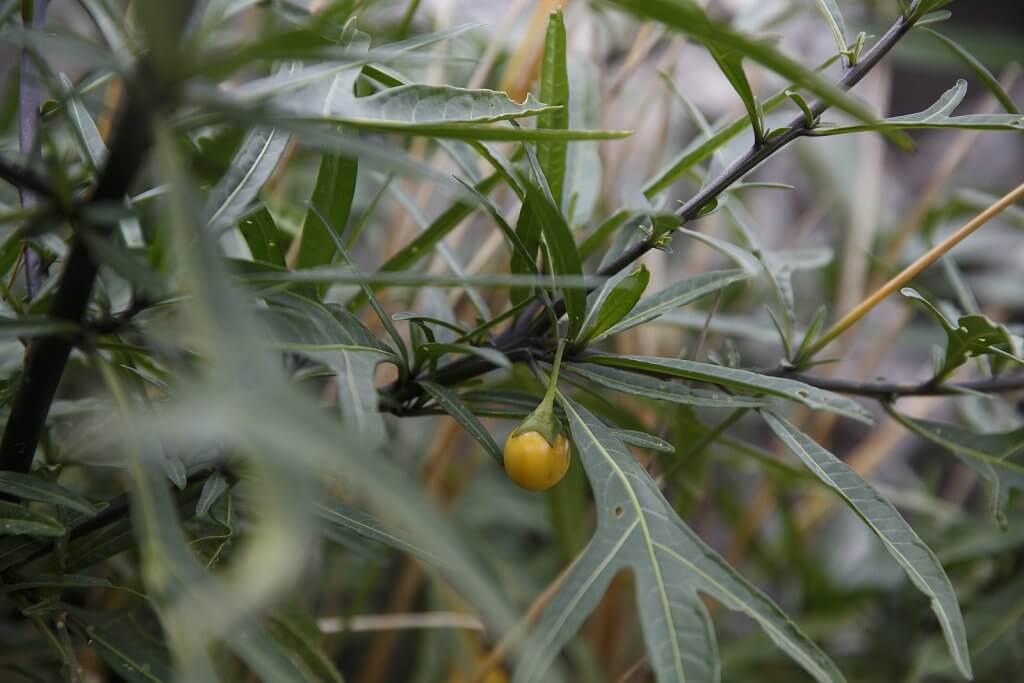
Medicinal uses of Solanum varieties
American black nightshade has possible medical value in treating the herpes virus due to its antiviral properties. Other studies have shown that extracts may also have antimicrobial properties and could be useful in treating certain bacterial illnesses including those caused by E. coli and Staphylococcus aureus.
Bittersweet nightshade has also shown promising evidence in its ability to inhibit the growth of bacterial strains of E. coli and S. aureus. The stems have been approved by a scientific board in Germany for use in therapies that help to treat eczema.
Did you know…
The name Solanum is thought to have been derived from the Latin term solare, which means to soothe. Some members of this plant family have shown promising medicinal properties. Another thought is that the flower heads of many Solanum plants resemble the rays of the sun, giving them their name.
Conclusion
Solanum is a broad and diverse genus, from tomato vines, deadly nightshade to the humble potato. It is a genus that deserves great respect and one that also shows promise in the medical field. While some wild Solanum varieties are edible, it is critical that correct identification is confirmed before consumption.
—————Written by Hannah Sweet
Hannah is a freelance writer and graphic designer from the UK. With a penchant for travelling, photography and all things botanical, she enjoys writing about a wealth of topics and issues, from conservation and slow living, to design and travel. Learn more about her writing and design services at www.sweetmeanders.co
Many of our readers find that subscribing to Eat The Planet is the best way to make sure they don't miss any of our valuable information about wild edibles.
See our privacy policy for more information about ads on this site






